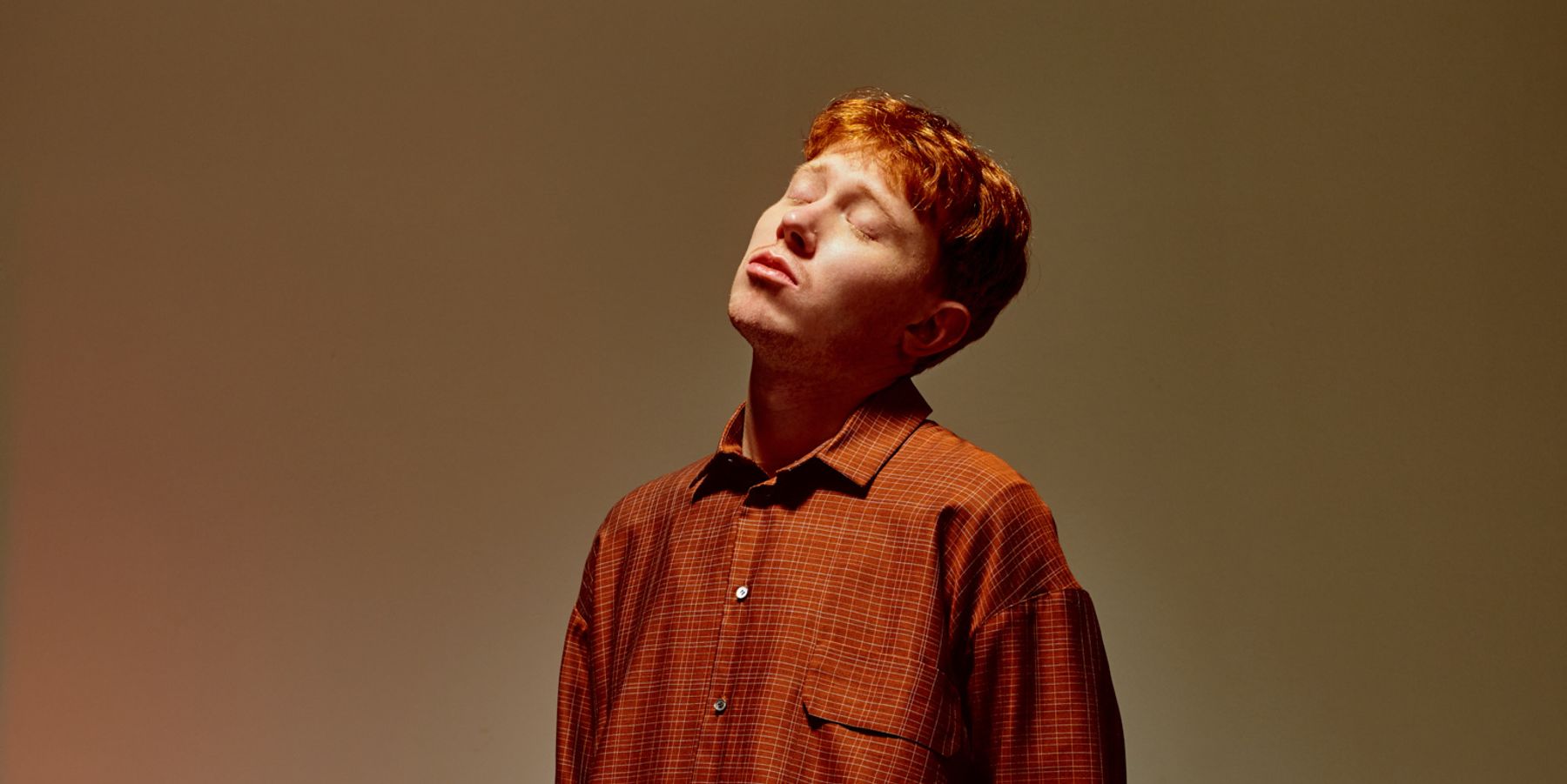
Music
King Krule Leaves London for the Real World
Story by Nick Fulton / Photography by Jordan Walczak / Styling by Abby Bencie
24 February 2020

Archy Marshall likes comfy clothes. For our post-photoshoot interview, he switches out of the Eckhaus Latta and back into a simple button-up shirt and straight-leg pants — then slouches in a chair with a sandwich. Upon hearing my Kiwi accent, Marshall excitedly shares that he's a fan of the New Zealand indie musician Fazerdaze — she recently emailed him some music she's been working on, and it's excellent. He also reminisces about the time in 2012 when he saw Conan Mockasin perform Forever Dolphin Love, and again more recently when Mockasin screened Bostyn & Dodsyn, his five-part melodrama about a fictional music teacher that accompanied his latest album Jassbusters. Like Mockasin, Marshall is a wildly prolific entertainer. At just 25 he's released a diverse slate of music under different aliases dating back a decade, including his own short film titled "Hey World!" which is a companion piece to Man Alive!, his latest album as King Krule.
Marshall rose to prominence in 2013 as an oversized suit-wearing English kid with a deep cartoonish baritone. His debut album 6 Feet Beneath The Moon, released on his 19th birthday, ended up on the Billboard charts and landed him on the cover of The Fader. His second album The OOZ became an even bigger chart success and was nominated for Britain's prestigious Mercury prize; Pitchfork named it the best rock album of 2017. At 66 minutes, it was something of a meandering opus — "an expression that was endless," Marshall says now. The songs were dense and sometimes suffocating, but that was only until you managed to open them up and realize their tenderness.
Related | Don't Call Beach Bunny a TikTok Band
Man Alive! starts with a burst of dissonant music that reflects Marshall's current desire to live more in the moment. Where his previous albums presented a bird's eye view of London life, Man Alive! zooms in and lucidly lays out a scene. The opening lines to "Cellular" are instantly more fluid than anything he's done before — "there's a television, there's a television speaking to me," he sings over growling bass. "There's a French girl, on my television, she's crying in the palm of my hand." It's followed by "Stoned Again" and "Comet Face," two punk rock songs that sound like messy bar fights. In between them you can hear the grinding girders of a garbage truck, which on first glance sound like horns in a Caribbean Carnival. "Perfecto Miserable" begins with an answer phone ringing off and signals the start of a mellow, meditative run of songs. The phone rings again before "Alone, Omen 3," but this time Marshall answers it with a cathartic lyrical verse that's one of his best. It's here, amid a maze of instruments, that he finds his sweet spot.
Before he finished recording Man Alive! Marshall became a dad — two tracks were written after his daughter was born just over a year ago. But most of the songs reflect his nervous anticipation of becoming a parent and the personal growth required for that inevitable responsibility. Marshall's partner, the photographer Charlotte Patmore, is originally from Wigan in Britain's North West, and the couple moved back there to prepare for the birth. The change of setting became a blessing in disguise for Marshall, who says his lifestyle in South London wasn't particularly conducive to raising a child. Man Alive! contains fragments of both settings; the heady first half mimics the chaotic ebb-and-flow of a metropolis, while the atmosphere pieces towards the end connect to simpler pleasures in Lancashire's outer limits. Together they showcase how malleable King Krule's music can be. It's only February, but the first great rock album of the 2020s has arrived.
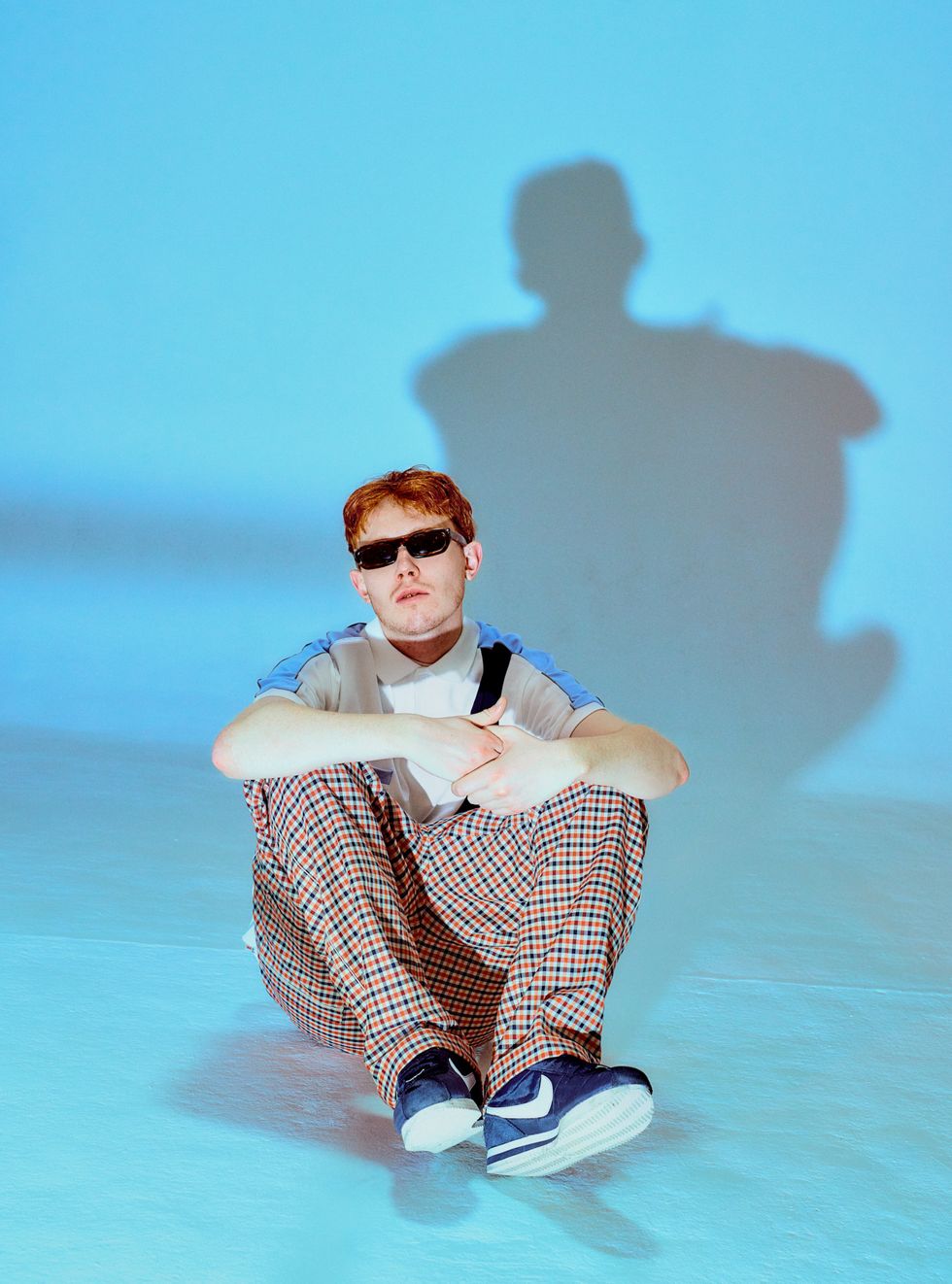
Top: GR10k, Pants: Wales Bonner, Sunglasses: Sunbunnies, Shoes: Nike
How has your day-to-day life changed since you became a dad?
Naturally, it's changed quite hugely. I moved out of London because my partner is from the North West — between Manchester and Liverpool there's a place called Wigan, we moved up there before she was born, and she was born there. For me, the adjustment has been surprisingly easy because I've been up there, so I haven't had the same settings as in London. And she's just remarkable, she's an amazing baby. So many people were scaring me, saying you're not gonna sleep, she's gonna be crying all the time, stuff like that, but it's just not been the case. My partner is amazing with her, and the birth was really amazing, so I haven't thought about it too much, I've just been rolling with it.
It's a somewhat chaotic time to bring a baby into the world, especially with Brexit and the austerity measures that will likely increase as a result of it. How are you feeling about that?
A few people have said that, or have asked me similar things, that with the state of the world, it must be scary bringing someone into it, but I see this energy, this love, this thing inside of her that I think will really benefit this planet. I'm not putting too much pressure on her [laughs].
Related | Frances Quinlan, Rock and Roll Painter
You've said that this album documents your feelings about becoming a dad. Can you explain how some of those feelings manifest on Man Alive!?
In writing honestly, and in writing compositions about my life. That's all I've ever done, is write from my position, so I think naturally the changes in my life and in my environment affected me. I wouldn't say there's anything too direct about it.
Man Alive! contains more in-the-moment, real-time reflections, whereas The OOZ tackled some more broader themes. What did you enjoy most about writing from this perspective?
Like with anything in life, you grow and develop and sometimes you do something, release it into the world, and then you just want to do something different. I think the first lyrics I wrote were for "Cellular," and there was a really conscious understanding of just splitting a really simple scene about being on the train, someone is trying to call you — and obviously there's this situation going on there — and then you go underground and lose the connection. I just liked the way I described those things, it was simple, I wasn't trying to be too romantic or anything.
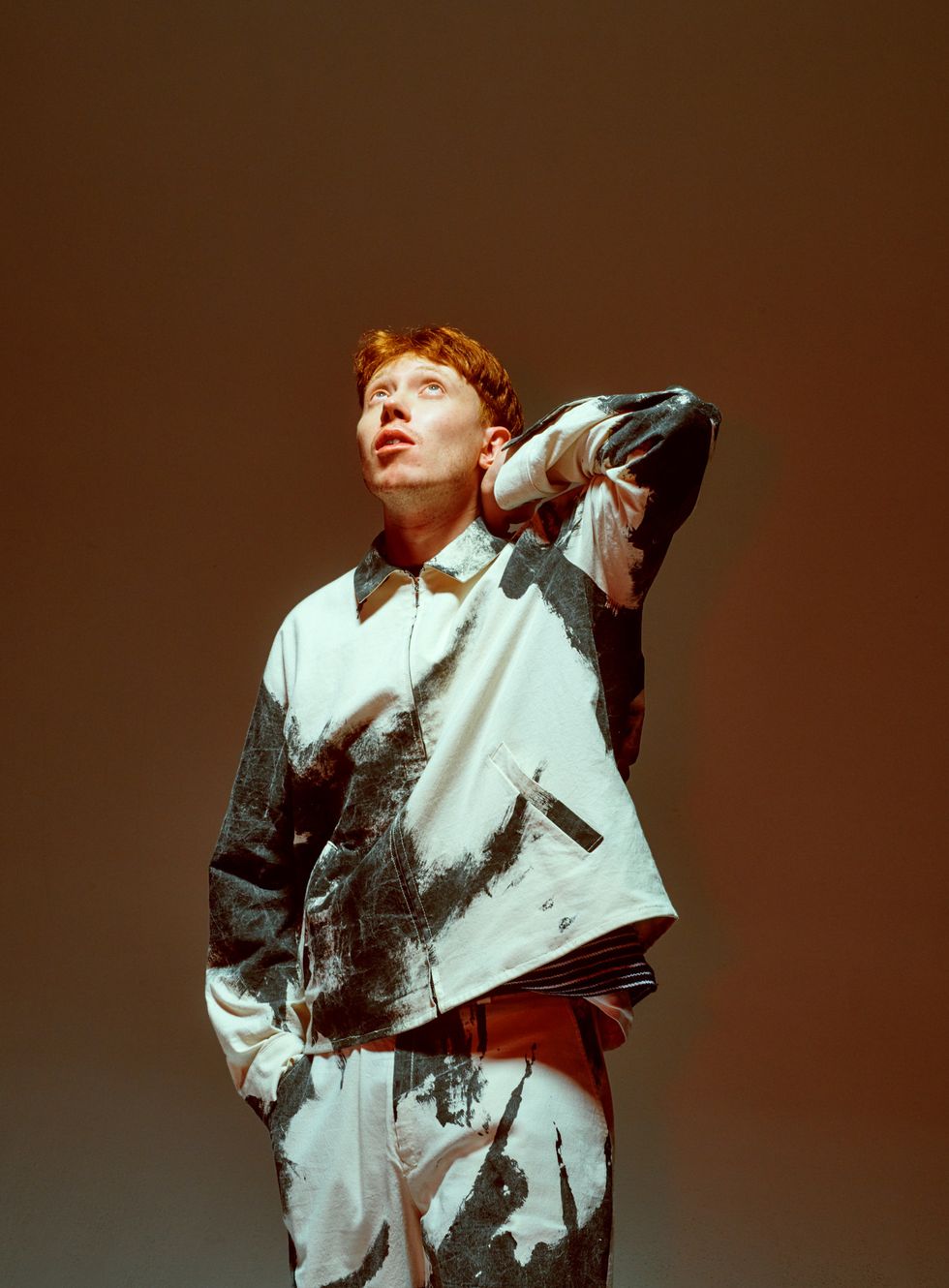
All clothing artist's own
You've stated that Man Alive!, which has a tighter run time than The OOZ, doesn't go "over the top" like that last album did. Can you explain why you think The OOZ was a bit over the top?
Even the name, it was about a splurge, an expression that was endless, that you can't really control, it just happens and then you refine it. This one I was just more clear on, compositionally, all of it was pretty easy to write. So yeah, it felt different because I was writing songs, tighter compositions, that I could come in and out of much quicker. Though I think The OOZ came at a time in my life when I needed to do something like that.
I read that you've got kind of bored of these songs already. Have you been doing anything to reconnect with them?
Playing them with a band instantly reignites something in me, because that's how I really connect with music. When I'm not [with the band] I play a lot on my own, just with the guitar.
Related | Hannah Diamond in HD
Has playing them live, with or without a band, also changed the context of some of the songs?
Yeah, for sure. With something like "Hey World!" (a short film released in November 2019 that contained several songs from Man Alive!), it's a completely different interpretation of those compositions, it's more about the relationship between me and the guitar. With the band, it's really bringing everyone in to vibe with me, to play with me and create something that everyone can be apart of.
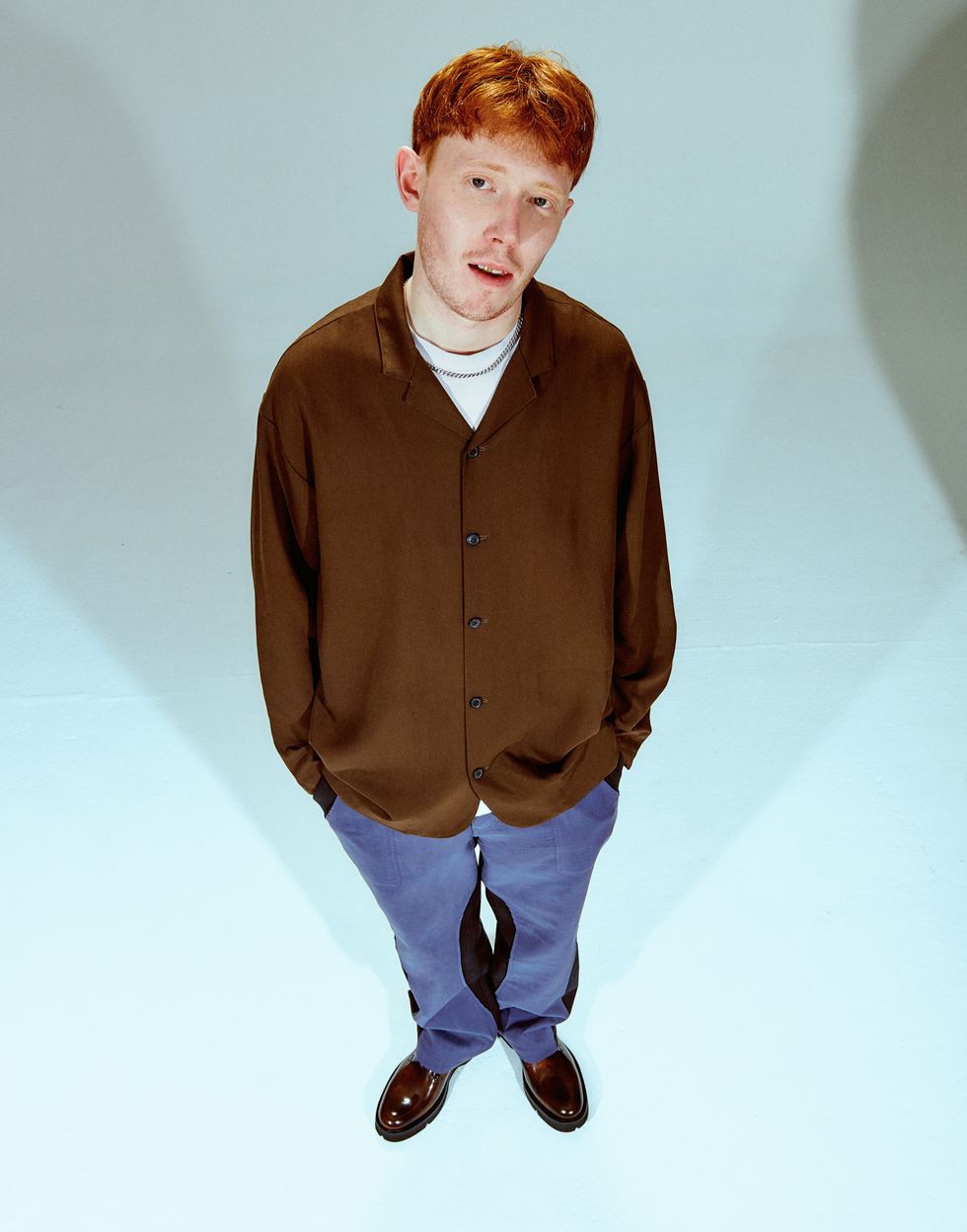
Top: Stephan Schneider, T-shirt and necklace: artist's own, Pants: Keenkee, Shoes: Dries Van Noten
The lyrics on 'Stoned Again" sound like they could have been freestyled. Do you ever just hit record and see what happens?
I can't really remember what happened with that one, cos I'd got the basis of it down and then I re-recorded it with [Ignacio Salvadores]. I said to him, I was like, 'bro, I just made them up on the spot didn't I?' But we can't really remember. I'm pretty sure it was completely off the top, but I think it was in stages — I did two verses then would stop, write, and go from there and take the theme, because it's quite a clear narrative. That was in 2016.
There's a really interesting image on the cover of the album. What can you tell me about it?
Yeah, me and my brother… for the album artwork he was doing loads of different stuff, originally it was portraits of me with head injuries, stuff like that. Then I got obsessed with pylons — my uncle painted some beautiful pylons and we went out and took loads of photos of pylons and made videos of them — but we couldn't quite work out what to do with that stuff. Then I was just sitting in my mom's front room one day and there was this painting in front of me that [my brother] had left there. It was the painting of the guy and I was looking at it and was like, "that's an M with his legs and an A with his hands." So I called up my brother and was like, "I think we should just use this."
Related | Ezra Furman Is Angry, Aren't You?
At the end of "Comet Face" there is a voicemail recording. Where did that voicemail come from?
I was in the studio and was recording off of my phone, so I had my phone plugged in, and my drummer George Bass called me up. It's just the conversation we had, there's no real meaning to it. He was just asking me if my mom was at her house, and if he could go around and drop off an amplifier.
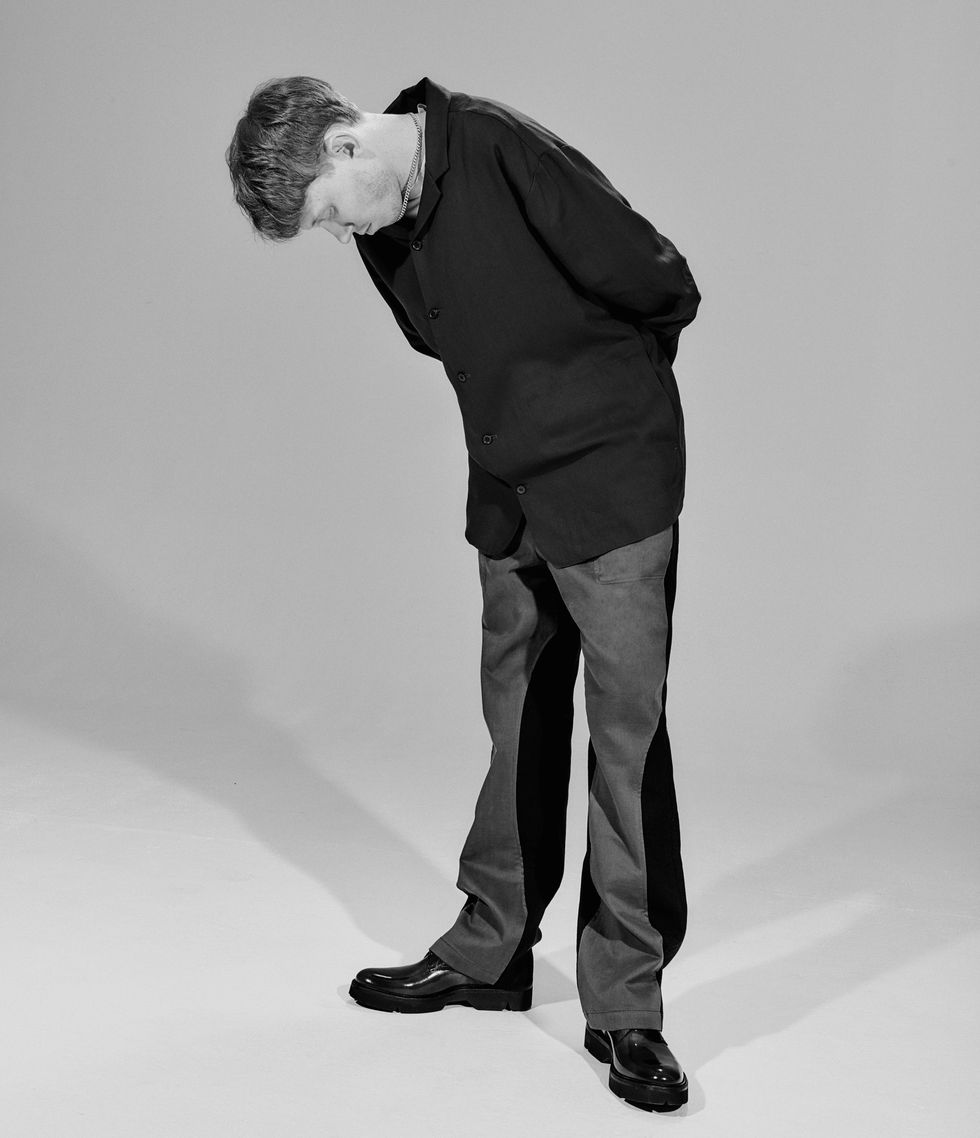
Top: Stephan Schneider, T-shirt and necklace: artist's own, Pants: Keenkee, Shoes: Dries Van Noten
Is it the same conversation that can be heard in the background throughout the song?
No, that's a vocal in the drum break that we used, which is an Otis Redding track. It's an actual break where he and this woman are taking the piss out of each other. It's funny that you thought it was a conversation, I quite like that.
On "Theme For The Cross" I can hear some traffic and street noise. Where did you record that?
We recorded that song in Stockport, but that bit at the end, we were in a studio in London called Shrunken Heads where I've recorded quite a lot throughout my life. I know the owner who is the engineer there, his name is Al. We were recording one night and I just said 'can we stick a microphone out the window?' He lives on the top floor with a balcony overlooking a High Street, so we did that and just went downstairs and got a beer.
Have you done similar things in the past?
Yeah quite a lot, I like field recordings. One that comes to mind is in between "Stoned Again" and "Comet Face." I was asleep one morning, having this very weird lucid dream, and all of a sudden this group of men came and started playing trumpet right in my face. I woke feeling pretty angry and it turned out that it was the metal of this dustbin truck picking up the bins. It just sounded like these crazy horns. In the dream it was these big dudes just looking at me and playing, it was really intense, but it was the arms, or the girders, of the truck rubbing against it.
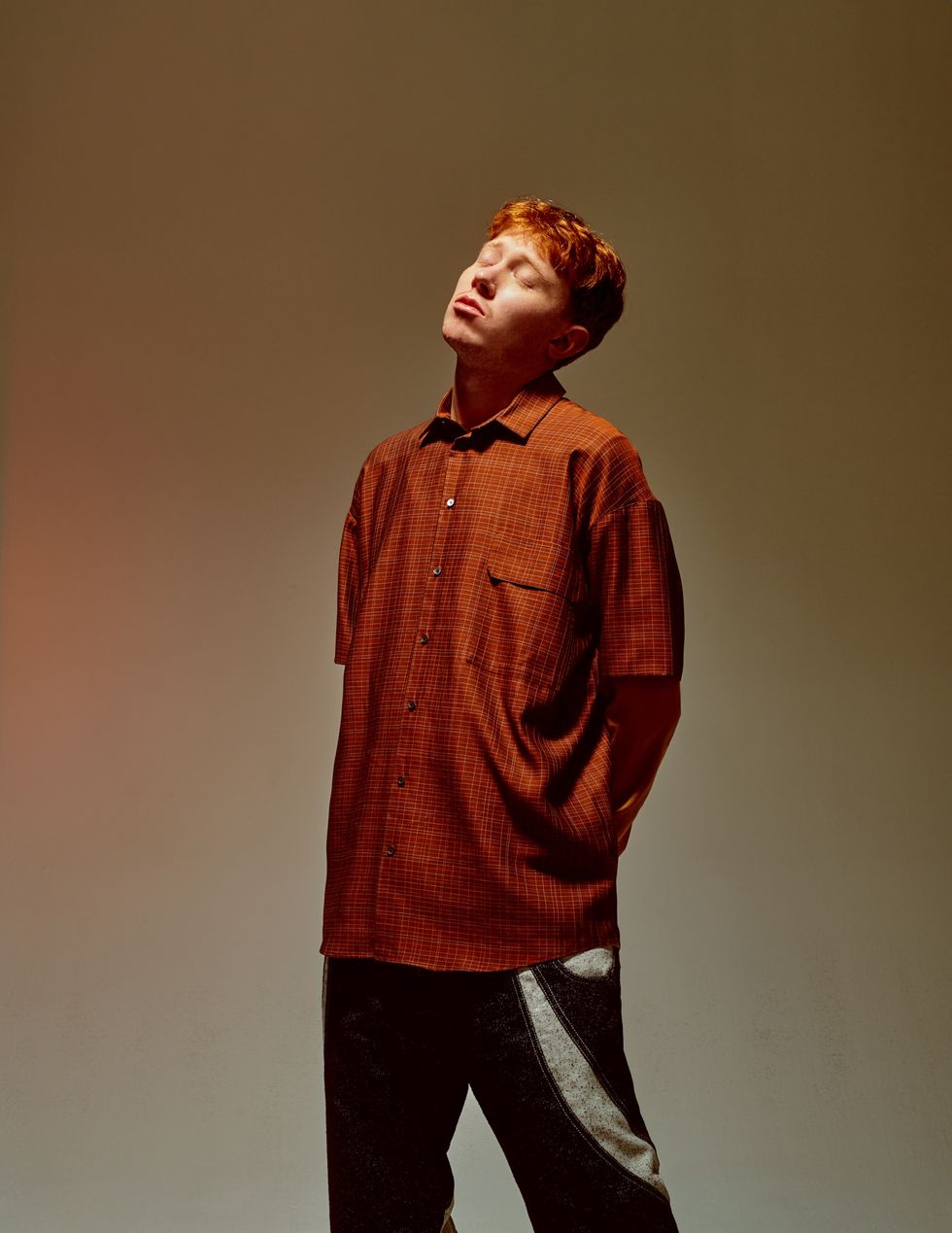
Top: Stephan Schneider, Long Sleeve: Eckhaus Latta, Pants: Kiko Kostadinov
The start of the album is quite punk, whereas the last third of the album is much more atmospheric. With all the different genres that you float between, do you ever find it difficult to concentrate on one particular style for a sustained period of time?
"Theme For The Cross," we actually made that song because me and [Ignacio Salvadores], the saxophonist, were getting bored of recording the album. We were in Stockport, we'd been there for about a week and we were sleeping there as well, so it was getting a bit on top [of us]. So we thought, let's make a sci-fi soundtrack to get away from it, and that's where that song kind of started. The melody he wrote for that song is incredible, there's something visual about the song, I really like it. I had the piano loop already in my MPC, so I just pressed play and he wrote it from that. It's really nice.
Photography: Jordan Walczak
Stylist: Abby Bencie
Groomer: Amanda Wilson at Opus Beauty using Kevin Murphy and Kosas Cosmetics